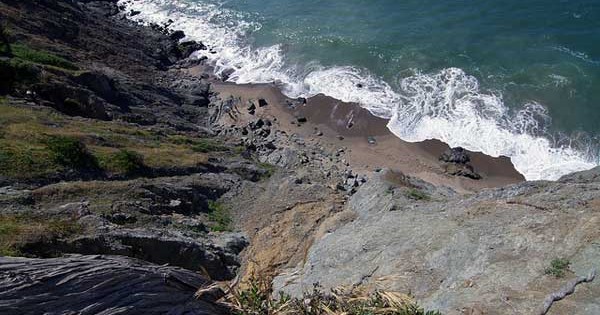
You are at the edge of a steep cliff. Look down, if you can stand it, at the thumbnail ripples of the sea far below you. Now imagine yourself at the bottom of that cliff, lolling lazily in a boat, staring up at where you once stood.
Does the cliff seem taller from the top looking down, or from the bottom looking up? It is, of course, the same height no matter your reference point, but according to Russell Jackson at the University of Idaho and Lawrence Cormack at the University of Texas, Austin, it doesn’t appear that way.
The two have made a compelling case for what they call “evolved navigation theory” or E.N.T. All else being equal, the theory has it, we prefer short paths to longer ones. This preference comes into play as we navigate our terrain. If our goal is to reach the other side of a mountain or forest, a route that takes us there faster—thereby exposing us as little as possible to predators or to the elements—is a no-brainer. Natural selection has since capitalized on this preference: instead of perceiving distances accurately, we’ve actually evolved to perceive unsafe routes to be longer—less tempting—than safer ones.
How might this theory play out? In our scenario, the cliff is deemed taller from above than below—empirical studies suggest by as much as 30 percent—because descending is more dangerous than ascending. When we climb up a surface, we are generally in control. But all bets are off for the gravity-propelled trip down.
Now put yourself back on the edge of the steep cliff. This time, however, you are facing inward, focusing your eyes on a white line about a dozen feet in front of you. Walk to the white line and about face. From which perspective—the edge looking in or inward looking out—does the distance between line and abyss appear longer?
This one is trickier. My intuition screams that, if natural selection had an ounce of common sense, we’d have evolved to underestimate the distance between ourselves and the edge of a cliff we are actively peering over: better safe than sorry! But E.N.T. predicts (accurately, according to new research) the opposite. Compared to the reverse path to safety, the route toward the cliff’s edge appears longer. After all, according to the theory, were the reverse to be true the cliff’s edge would beckon to us like a siren.
I’m not sure what to make of E.N.T., despite its elegance and ability to explain (and even predict) visual phenomena. Why the skepticism? We can never know for certain whether natural selection is indeed what shaped us to unconsciously overestimate unsafe routes. There is always an alternative explanation. What if the threats we perceive in unsafe routes simply fluster us to the point of measuring them inaccurately?
But I’ll be the first to admit that my skepticism might be misplaced. In an email, researcher Russell Jackson identified a fatal flaw with this particular alternative explanation: mere inaccuracy should produce both overestimates and underestimates. “However,” he writes, “we find systematic overestimates and not underestimates.” And even had he not found fault, he makes another fair point: “Skepticism of any explanation because the explanation utilizes evolution by natural selection is ignorant and short-sighted.” That is, just because evolutionary explanations have a reputation for being ad-hoc Just So stories, they should nonetheless be evaluated on their own terms. After all, writes Jackson, “natural selection provides more accurate insights about the biological world than any other idea in the history of humanity.”

